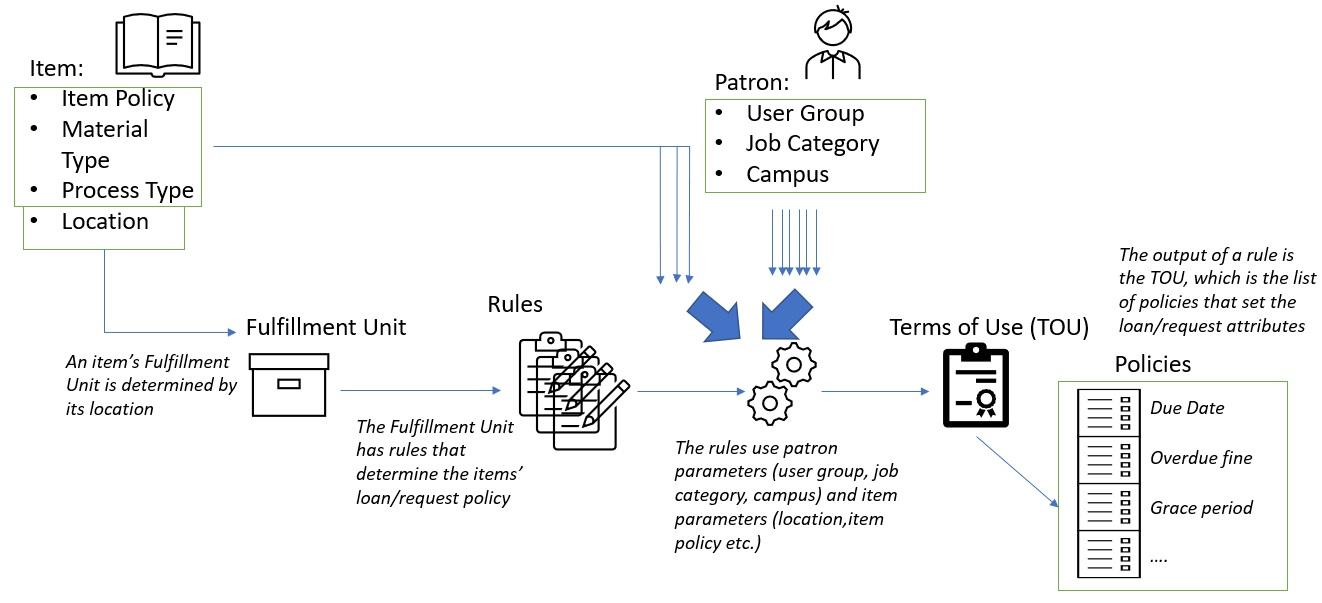Parts of Fulfillment
Fulfillment Units: The Backbone of Alma Circulation
In Alma, the Fulfillment Unit is the fundamental structural component that governs how items circulate within your institution. It serves as the logical container that connects physical locations with the rules and policies that determine how patrons can interact with those items.
Fulfillment Units Defined
A Fulfillment Unit is a logical grouping of one or more physical locations withingwithin anyour institution that followall share and apply the same set of circulation policies.
Core Components and Their Roles
The Fulfillment Unit acts as a container for the following essential components, which work together to process circulation transactions:
Network Fulfillment Units (Consortial Environments)
In a consortial (shared) environment utilizing the Alma Network Zone (NZ), a Network Fulfillment Unit is used to manage circulation policies that apply across multiple institutions, such as consortial loan (CLS/AFN) transactions.
-
Function: It is possible for an Institution-only Fulfillment Unit to incorporate rules from a Network Fulfillment Unit (like the 'WRLC Fulfillment Network'). This allows for centralized management of shared policies.
-
Example: In your consortium, the 'WRLC Fulfillment Network' is the single NZ fulfillment unit containing all rules specific to CLS/AFN transactions.
Understanding the Policy Hierarchy
The process of determining the final circulation policy follows a precise hierarchical order, which includes the evaluation of Network rules:
-
Start with the Location: When a patron attempts a transaction, Alma first identifies the Fulfillment Unit associated with the item’s Physical Location.
-
Determine Transaction Type: Alma immediately filters the relevant policies based on the type of transaction being performed (e.g., Loan, Request, or Booking). This restricts the evaluation to only the Fulfillment Rules associated with that category of Terms of Use.
-
Evaluate Institution Rules: Alma checks the list of Fulfillment Rules configured directly in the Institution-only Fulfillment Unit, evaluating them in their configured order.
-
Evaluate Network Rules: If no Institution Rule is met, Alma proceeds to evaluate the rules within the Network Fulfillment Unit (if one is configured for the Institution's unit). These rules are evaluated in their configured order.
-
Apply Default Rule: If no rule in either the Institution or Network unit is met, the system applies the final Default Rule at the end of the rule list.
-
Apply the TOU: The first Rule whose criteria are met (whether Institution, Network, or Default) will be triggered, and
UseritsRegistration)linked Term of Use (TOU) will be applied to the transaction (e.g., a 3-week loan).
Physical
Locations
Policy Users
Overrides: Item Policies
Item Policies are the mechanism used to create exceptions to the standard circulation policies defined by the Fulfillment Unit.
-
Item Policies (Item Policy 1, 2, 3, etc.): These are special codes that can be configured and added directly to an item record (e.g., "Library Use Only"). An Item Policy can be used as a parameter in a Fulfillment Rule to override the default TOU for that item's location, creating an exception for a specific piece of material, regardless of the patron's status.

